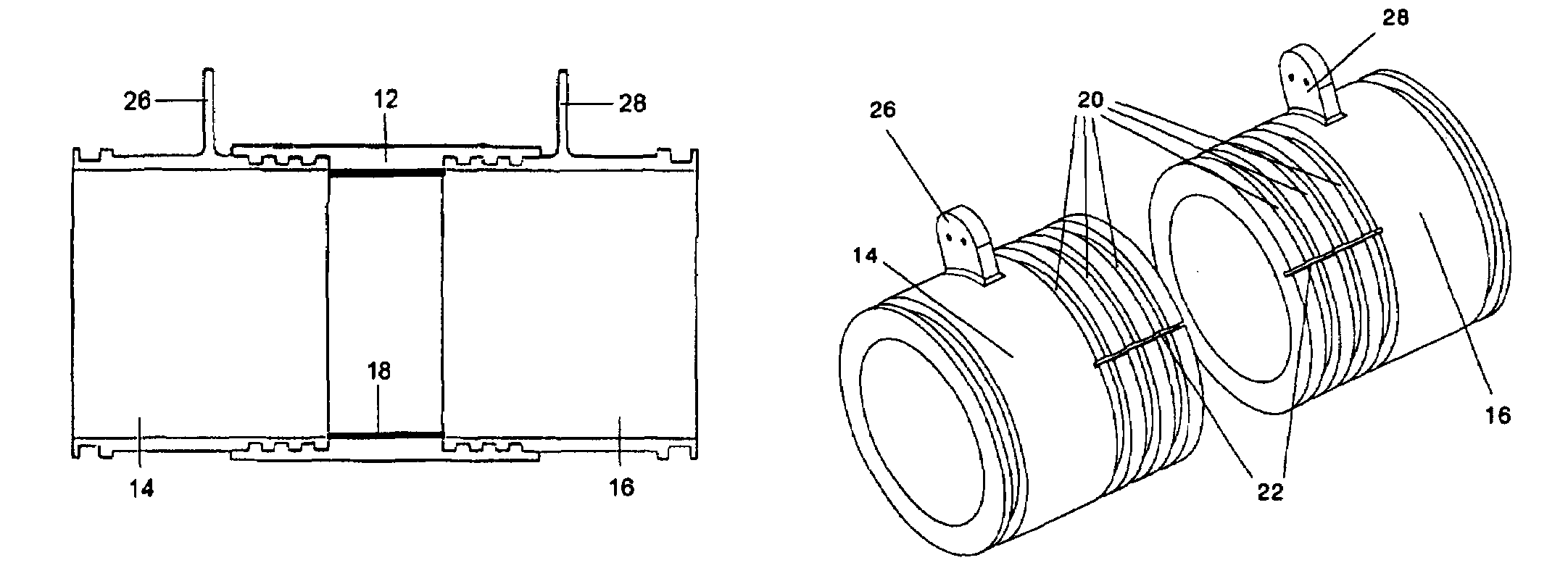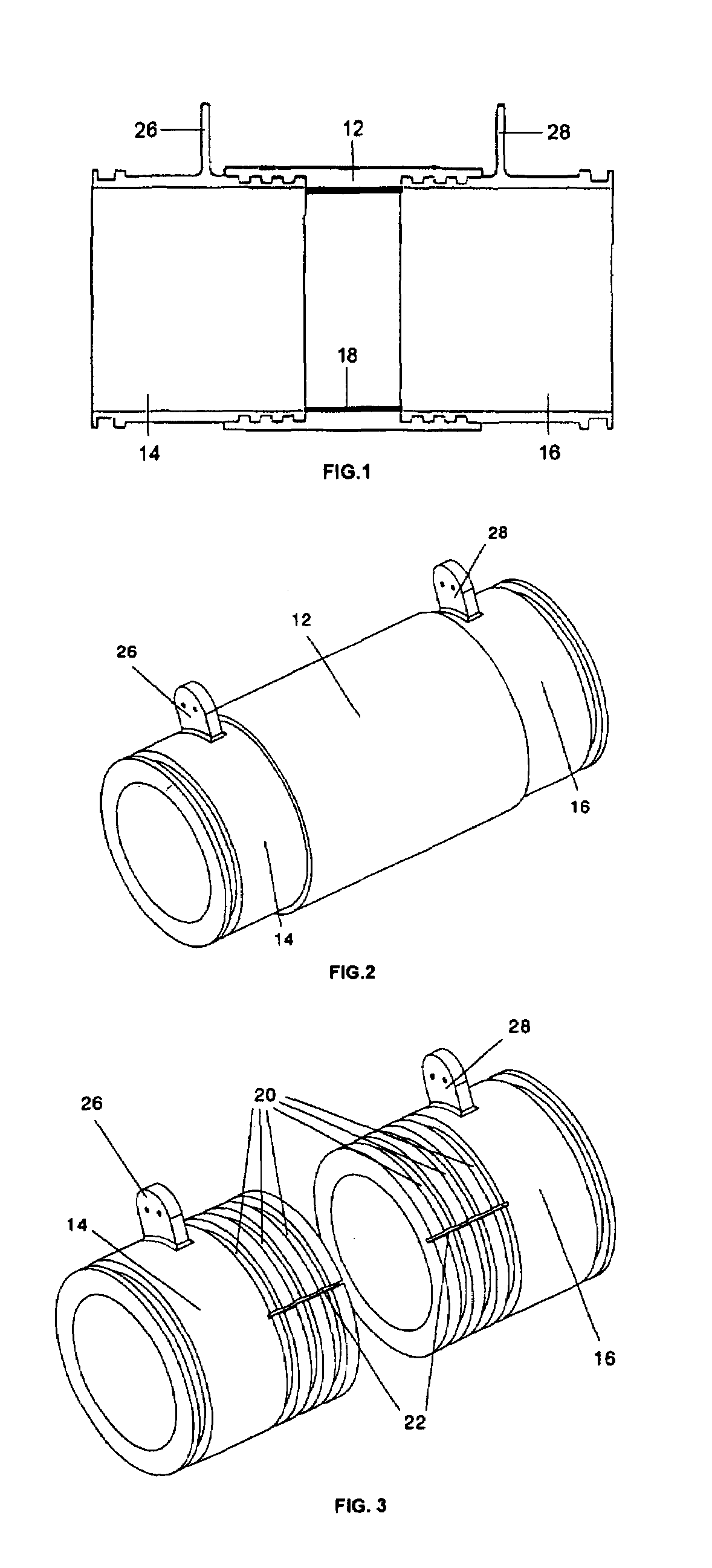Current insulation system for fluid systems
a fluid system and current insulation technology, applied in the direction of sleeve/socket joints, mechanical equipment, static dischargers of aircraft, etc., can solve the problems of equipment malfunction, equipment malfunction, and internal electrical currents that may give way to catastrophic failures or phenomena of the overall structural integrity, so as to reduce maintenance costs, reduce manufacturing and assembly costs, and reduce weight
- Summary
- Abstract
- Description
- Claims
- Application Information
AI Technical Summary
Benefits of technology
Problems solved by technology
Method used
Image
Examples
Embodiment Construction
[0022]In FIGS. 1, 2 and 3, which show a preferred embodiment of the invention, it can be seen that the insulating insert 12 is a piece joined in a leak-tight manner to parts 14, 16 of a metal pipe. Such joint occurs when the insulating insert 12 is formed between said parts 14, 16 by means of any suitable technique. Therefore specific jointing and / or leak-tight elements are not used.
[0023]A suitable technique is injection using a suitable mold (not shown) resulting in a cylindrical-shaped insulating insert 12. The injection can be carried out either externally or internally, preventing internal stepping according to needs. Nylon, polyamide and PEEK are some of the preferred insulating materials that can be used.
[0024]The edges of parts 14, 16 of the metal pipe are grooved so as to facilitate the leak-tight joint of the insulating insert 12 formed in situ. For the purpose of this invention, the expression “grooved edges” must be understood in the broadest sense, including any type of...
PUM
 Login to View More
Login to View More Abstract
Description
Claims
Application Information
 Login to View More
Login to View More - R&D
- Intellectual Property
- Life Sciences
- Materials
- Tech Scout
- Unparalleled Data Quality
- Higher Quality Content
- 60% Fewer Hallucinations
Browse by: Latest US Patents, China's latest patents, Technical Efficacy Thesaurus, Application Domain, Technology Topic, Popular Technical Reports.
© 2025 PatSnap. All rights reserved.Legal|Privacy policy|Modern Slavery Act Transparency Statement|Sitemap|About US| Contact US: help@patsnap.com


